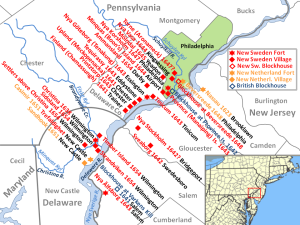FRAUNCES TAVERN – NEW SWEDEN 1645
One of the more interesting finds in my search for ancestors found me stumbling blindly through what the British would call an ‘ordinary’ on Manhattan Island. My Irish ancestors would call it a pub. And the folks here in Wisconsin would call it a bar. It was both bar, brewery and grill, a forerunner of the modern day microbrew pub. If the food was high end we would call it the first of the American gastropubs! But that’s not what surprised me. What did surprise me was this: George Washington and the Sons of Liberty used the pub as a meeting house (Fraunces Tavern) in the early stages of their strategy sessions in their quest for liberty. My Dutch ancestors sold their interest in this facility, long before George discovered it. Pieter Wolphertsen von Couwenhoven moved down the coast to create Atlantic City, New Jersey. Annettje von Couwenhoven, his daughter, and Dutch grand daughter of Wolphert Gerretse von Couwenhoven, married Anders, the Swedish son of Olaf Stille, and the road to Posey, Indiana began with the first steps in a migration that would carry through generations and over centuries.
New Sweden was a short lived experience for the Swedes (1638-1655) but had a lasting effect. They introduced the log cabin, the Lutheran religion and a lust for lutefisk that remains the staple crop of every dinner table in the Lutheran Women’s League of Minnesota, don’tcha know. The above map shows the proximity of New Sweden to New Amsterdam and that closeness became a downfall for the Swedes. New Sweden had a population of roughly 900 citizens (only half of them Swedes) scattered about per the attached map (See below). The Dutch wanted the shoreline, the fur and tobacco trade and access to those blue crab coming out of the Chesapeake Bay. In 1655 the Dutch absorbed the Swedish Colony, only to lose their ‘kingdom’, nine years later, to the British in 1664. The Dutch and Swedes created economic issues for our British ancestors in both Connecticut, Accomack and Westmoreland, Virginia. And the British believed military might would solve the problem. And so they put on their red uniforms and ransacked the place.
Maps will enlarge if you click on them for better viewing. Use your back button to return to this page.
Olaf Stille and his family lived in the fort known as Christina, also referred to in plat maps as Christina’s One Hundred or spelled as ‘Christiana’. Christiana becomes relevant once again in Revolutionary War history.




